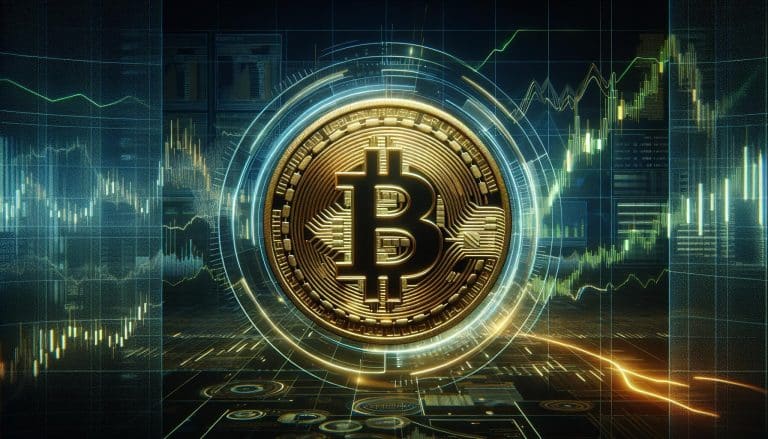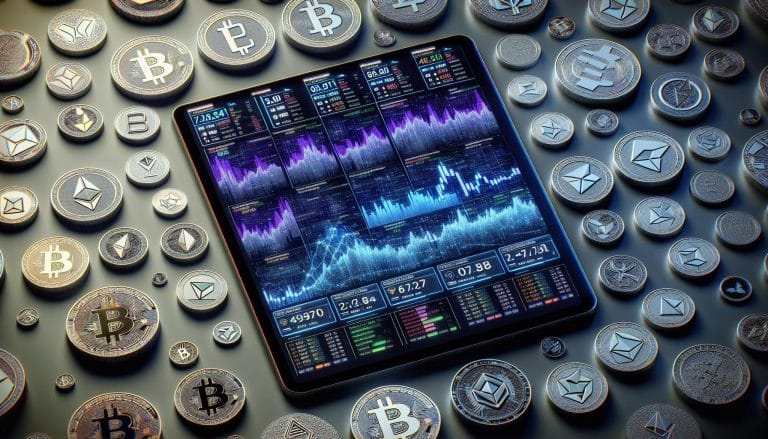Xrp Partnerships And Price Correlation
XRP, the cryptocurrency of Ripple, has recently been at the center of attention in the financial world. With a wide array of partnerships and its famously volatile price movements, it is no surprise that XRP has become a central figure in the global economy. But many questions remain: what are Ripple’s partnerships? Is there any correlation between XRP’s price and its partnerships? What impact does this have on regulations, market sentiment, and global finance? This article explores these topics to better understand how XRP is impacting our current financial system.
Overview of XRP
Ripple (XRP) is a cryptocurrency and digital payment system that was released in 2012. It has become increasingly popular due to its unique features, such as enabling fast payments with low transaction fees. Additionally, XRP has been adopted by numerous financial institutions throughout the world, leading to an increase in its adoption rate. The technology leveraged by Ripple and its associated digital currency have been a major factor contributing to their success. This success can be seen through the rapid growth of the XRP market cap over recent years, which signals an increasing acceptance of this technology. Moving forward, Ripple’s partnerships will be instrumental for furthering the use of XRP and helping it become more widely accepted as a legitimate form of payment.
Ripple’s Partnerships
Recent collaborations between Ripple and other organizations have been instrumental in driving innovation and creating new opportunities for growth in the blockchain industry. For instance, Ripple recently partnered with SBI Holdings to launch MoneyTap, a mobile payments application that allows customers of major banks in Japan to settle domestic payments instantly 24/7 from their smartphones. This partnership has enabled SBI Holdings to provide remittance services with greater convenience and compliance with regulations. Additionally, Ripple has also partnered with payment processing giants such as American Express and Santander to develop innovative solutions for faster cross-border payments.
The partnerships between Ripple and these organizations demonstrate its commitment to enhancing financial services through blockchain technology, while also ensuring regulatory compliance. Consequently, this has had a positive impact on the value of XRP as well as its market capitalization. As more companies partner up with Ripple, there is an increased potential for further price appreciation which could potentially bring about new opportunities for investors in the cryptocurrency space.
Price Correlation
The appreciation of Ripple’s value has been closely linked to its strategic partnerships and collaborations, creating a strong correlation between the two. While Ripple is not a decentralized system like many of its competitors, it has had success in scalability, allowing for faster and cheaper transactions compared to other digital currencies. This advantage has allowed Ripple to be embraced by several large financial institutions which have further increased its market capitalization. The growth of the XRP token is thus strongly correlated with Ripple’s ability to attract strategic partners and build successful collaborations. Decentralization and scalability issues are key factors that influence the price of XRP as more organizations adopt it into their systems. As such, any progress made towards improving these aspects could result in further appreciation of XRP’s value on the markets. This highlights the importance of partnerships for Ripple in keeping up with current trends while paving way for wider adoption of its technology.
Regulations
Regulations are an important factor in understanding the potential of Ripple and its cryptocurrency XRP. Governments around the world have taken steps to ensure that cryptocurrencies comply with existing regulatory standards, such as anti-money laundering (AML) laws, consumer protection regulations, and taxation policies. These actions can have both positive and negative implications for Ripple’s success. On one hand, stricter regulations may help Ripple achieve greater legitimacy amongst financial institutions and attract more users; on the other hand, they could also lead to a decrease in demand if they become too restrictive or expensive to comply with.
The market sentiment towards XRP has been further impacted by these regulatory developments. For example, recent investments from big players like SBI Group have been met with enthusiasm from investors who see this as a sign that XRP is gaining trust among large financial institutions despite ongoing scrutiny from regulators. Consequently, positive news regarding compliance efforts can often cause spikes in price while harsher enforcement measures tend to bring it back down again.
Market Sentiment
The sentiment of XRP investors is heavily influenced by the regulatory environment surrounding it. Different countries have adopted different stances on cryptocurrencies, some more favourable than others. As a result, investor sentiment changes according to these regulations and policies. To analyse this changing sentiment, researchers are increasingly turning to sentiment analysis techniques such as natural language processing and machine learning algorithms. These methods make use of user interactions in order to identify market trends and predict future price movements. By tracking the conversations among users, researchers can gain insights into how they feel towards XRP and draw conclusions about its potential future performance. This data can be used to inform investment strategies and make better predictions about XRP’s price trajectory. In conclusion, understanding investor sentiment is essential for assessing the current state of the XRP market, as well as predicting its possible future behaviour. As such, researching user interaction through sentiment analysis should be part of any comprehensive strategy when considering investing in XRP. Moving forward, predictions regarding xrp prices will depend on an accurate assessment of market sentiments surrounding Ripple’s cryptocurrency.
XRP Price Predictions
Investors are increasingly turning to sophisticated methods such as sentiment analysis and machine learning algorithms to gain insights into the changing XRP market, enabling them to make more informed decisions about their investments. Price volatility for XRP is often seen as a sign of investment opportunities and a key factor in understanding its price predictions. While no one can predict the future with certainty, many analysts believe that XRP’s partnerships will have an impact on the cryptocurrency’s performance and value. By utilizing these methods, investors can better forecast potential changes in price due to external factors that may influence the overall trend of XRP prices. As such, understanding how different partnerships will affect the asset’s price is an essential part of successful trading strategies when investing in XRP. Transitioning into this next section, it is important to look at how these partnerships are being put into use by firms around the world.
XRP Use Cases
XRP has been adopted by the financial services industry as an effective tool for a variety of use cases. Smart contracts, interbank money transfers, and cross-border payments are three key areas where XRP is being utilized to streamline processes. XRP’s distributed ledger technology provides a secure and efficient platform that allows organizations to quickly and cost effectively transfer funds between different parties with minimal effort.
Smart Contracts
Smart contracts can offer a powerful tool for Ripple and XRP investors to facilitate transactions with increased trust and security, as demonstrated by the case study of a recent auction held solely through the use of smart contracts. Smart contract design allows widespread access to previously complex financial instruments such as auctions, while blockchain scalability provides an immutable record of transaction history that is secure from interference. In this way, smart contracts serve as an effective solution to the problems associated with interbank money transfers. By providing a digital platform on which these settlements can occur without compromising data security or trust between users, Ripple and XRP investors are able to transact efficiently and securely. Consequently, smart contracts provide not only greater convenience but also improved safety for all parties involved in any given transaction.
Interbank Money Transfers
Interbank money transfers are a necessary component of the financial system, enabling investors and companies to move funds quickly and securely. The main advantages include:
- Interoperability among different banking systems for increased liquidity transfer
- Lower costs associated with international payments
- Faster processing times for transactions compared to traditional methods
- Improved security measures for preventing fraudulent activity and protecting customer data.
With these benefits in mind, Ripple’s XRP token is being used as an intermediary to power cross-border payments between banks, providing them with more efficient ways of sending and receiving money without having to rely on legacy systems or expensive third-party services.
Cross-Border Payments
Cross-border payments are becoming increasingly popular as a means of facilitating international transactions in a more secure and cost-efficient manner. RippleNet, the blockchain technology developed by Ripple, has enabled cross-border payments to become faster, cheaper, and more reliable than ever before. RippleNet’s distributed ledger technology provides unparalleled liquidity management capabilities while also addressing interoperability challenges that arise due to decentralization implications. Its scalability features make it ideal for processing large volumes of high-value transfers quickly and securely with minimal friction. As such, RippleNet has been adopted by leading financial institutions worldwide as an efficient platform for cross-border payments. The growing popularity of the platform is expected to have a positive impact on XRP’s long-term outlook as well.
XRP’s Long-Term Outlook
Analysis of Ripple’s strategic partnerships indicates a potential for long-term growth in value with further adoption of the XRP digital asset by financial institutions. The usage of stablecoins for faster and cheaper cross-border payments has been on the rise, which could create more opportunities for Ripple to partner with banks and other financial institutions around the world. In addition, investment strategies that focus on cryptocurrencies such as XRP have seen an increase in popularity among institutional investors, suggesting a possible shift towards increased acceptance of virtual currencies. These developments provide a strong indication that if current trends continue, XRP could become more widely adopted over time and potentially benefit its holders through significant price appreciation. Transitioning into the next section about ‘trends in XRP adoption’, it is important to consider how these factors may be influencing future demand.
Trends in XRP Adoption
Recent trends have highlighted an increasing interest in the use of virtual currencies, such as XRP, for various financial transactions. Ripple’s reach has been extended to over 200 countries and regions around the world, allowing individuals and organizations to easily send payments across borders. The impact of XRP is evident in its ability to facilitate faster cross-border payments at a fraction of the cost compared with traditional methods. Additionally, partnerships between Ripple and major financial institutions have increased adoption rates of XRP as an alternative payment option. With more banks recognizing the benefits that XRP can offer, it is likely that further partnerships will be established in the future. This could potentially lead to wider acceptance of virtual currencies among consumers and businesses alike. These factors suggest that XRP adoption is on a positive trajectory which may result in enhanced liquidity and greater market stability for this cryptocurrency going forward.
XRP Performance Compared to Other Cryptocurrencies
Comparative studies have indicated that XRP appears to be outperforming other virtual currencies in terms of adoption and transactions, potentially due to its lower costs and wider reach. Private investors are increasingly investing in XRP as they consider the cryptocurrency to have great potential for growth while merchants are adopting it for its low fees and fast transaction times. The table below provides a comparison of XRP performance to other crypto-currencies:
| Cryptocurrency | Adoption Rate | Transaction Costs |
|---|---|---|
| XRP | High | Low |
| BTC | Moderate | High |
| ETH | Moderate | Moderate |
While XRP has seen significant success, it is still important to consider the impact that this cryptocurrency may have on the global financial system.
XRP’s Impact on the Global Financial System
The implications of XRP on the global financial system must be carefully considered due to its rapidly growing popularity and potential widespread adoption. The major factor that must be taken into account is exchange volatility, as it can cause significant fluctuations in price which pose liquidity concerns. These risks could have a damaging effect on the long-term stability of the currency, making it difficult for investors and users alike to trust in its reliability. Furthermore, these fluctuations may also disrupt the general flow of money throughout the international market, resulting in instability and uncertainty for all involved parties. As such, it is essential that these challenges are addressed before any large-scale adoption occurs. In order to do this effectively, regulators must ensure that appropriate regulations are put in place to protect both investors and users from potential losses due to unexpected changes in exchange rates or other factors outside their control. With adequate safeguards in place, XRP could become an integral part of the global financial system with far-reaching implications for how people interact with money across borders. This transition would require careful consideration and thoughtful implementation but could ultimately provide great benefit if managed properly.
XRP’s Challenges
Having established the potential impact of XRP on the global financial system, it is important to consider the challenges posed by this cryptocurrency. Ripple’s reach has extended far beyond its initial creation for banks and financial institutions, with individuals now investing in XRP as a way to make profits. However, there are several drawbacks that must be taken into account when considering XRP as an investment option. These include:
- Volatility Risk: Cryptocurrencies are notoriously volatile and this can lead to large losses in a short period of time if market conditions change suddenly.
- Regulatory Uncertainty: The legal status of cryptocurrencies remains uncertain in many countries and this could have a negative effect on prices if regulations become more restrictive or punitive for investors.
- Security Risks: With any digital asset, there is the risk of hacking or other malicious activities leading to losses or stolen funds.
These risks are compounded by the fact that XRP does not offer any promises about future performance and cannot guarantee returns on investment like traditional assets such as stocks or bonds can. Thus, although Ripple has been instrumental in transforming aspects of the global financial system, potential investors should take caution before investing in XRP due to these associated risks and challenges. Despite these issues however, there remain benefits associated with using XRP which will be explored further in subsequent sections of this paper.
Benefits of XRP
Ripple’s extensive network of partners and its ability to facilitate cross-border payments quickly and securely make it an attractive option for investors seeking exposure to digital assets. XRP is particularly appealing due to its scalability, allowing transactions to be processed in a matter of seconds compared to other cryptocurrencies that can take minutes or longer. This scalability also allows for much higher transaction throughput than traditional payment networks, making it well suited for large-scale payments. Additionally, XRP has the potential to provide liquidity on demand by eliminating pre-funding requirements when settling across different currencies. This makes it an ideal choice for financial institutions looking to reduce costs associated with foreign exchange settlements. By addressing many of the current issues related to liquidity, scalability and cost savings, XRP offers significant advantages over other digital assets which could lead to increased demand and price appreciation. As such, there may be a correlation between the adoption of Ripple’s technology and its cryptocurrency XRP as well as the coin’s market value over time.
Security Concerns Around XRP
Despite its potential advantages, the security of XRP has come under scrutiny in recent years due to its centralized nature. Some of the major security implications associated with XRP include:
- The centralization of the network means there is a single point of failure; if something were to happen to the Ripple network it would affect all users.
- There are concerns about trustworthiness as Ripple Labs holds significant amounts of XRP and has control over the ledger, which could lead to manipulation or abuse.
- The blockchain is not open source, meaning that outside developers cannot audit or verify what is happening on the network, leaving it vulnerable to malicious attacks or bugs.
- It relies on trusted networks for transactions, which can be costly and slow down processing times.
Although these security concerns must be taken into consideration when investing in XRP, its decentralized nature does provide some protection from external threats as no single entity controls it completely. Furthermore, Ripple Labs has implemented measures such as multi signature wallets and secure storage solutions in order to ensure that funds remain safe from hackers and other malicious actors. Additionally, although the blockchain is not open source, they do have a bug bounty program where developers are invited to test for vulnerabilities in their codebase and receive rewards for successful discoveries.
Frequently Asked Questions
What is the minimum amount of XRP I need to buy?
The minimum amount of XRP that can be purchased depends on the buying strategies and price analysis. Factors such as market liquidity, available trading platforms, and pricing trends should be considered when determining the optimal size of a purchase.
How do I store XRP securely?
Storing XRP securely requires an appropriate Ripple wallet or exchange account. Choosing reputable wallets and exchanges is paramount to ensuring funds remain safe. Security features such as two-factor authentication can provide additional protection against malicious actors.
What are the risks involved in investing in XRP?
Investing in XRP carries the risk of market volatility and price fluctuations. Returns are not guaranteed, so it is important to understand the potential risks before investing.
How can I use XRP to make payments?
Astounding XRP utility allows users to make payments in a secure and efficient Ripple ecosystem. It enables near-instantaneous settlement with minimal cost, demonstrating its usefulness as a global medium of exchange. The XRP ledger is open source and accessible for developers to explore innovative payment solutions.
What is the difference between XRP and other cryptocurrencies?
Ripple, or XRP, is a cryptocurrency that differs from others in its history and lack of mining. It was created and distributed by Ripple Labs instead of being mined like most other cryptocurrencies. This difference sets it apart from the competition and impacts its price correlation.







 Bitcoin
Bitcoin  Ethereum
Ethereum  Tether
Tether  XRP
XRP  JPool Staked SOL
JPool Staked SOL  USDC
USDC  Wrapped SOL
Wrapped SOL  TRON
TRON  Lido Staked Ether
Lido Staked Ether  Dogecoin
Dogecoin  Figure Heloc
Figure Heloc  Cardano
Cardano  Bitcoin Cash
Bitcoin Cash  WhiteBIT Coin
WhiteBIT Coin  Wrapped stETH
Wrapped stETH  Wrapped Bitcoin
Wrapped Bitcoin  USDS
USDS  Wrapped eETH
Wrapped eETH  Chainlink
Chainlink  Binance Bridged USDT (BNB Smart Chain)
Binance Bridged USDT (BNB Smart Chain)  Zcash
Zcash  Monero
Monero  LEO Token
LEO Token  WETH
WETH  Stellar
Stellar  Coinbase Wrapped BTC
Coinbase Wrapped BTC  Ethena USDe
Ethena USDe  Hyperliquid
Hyperliquid  Litecoin
Litecoin  Sui
Sui  Avalanche
Avalanche  Hedera
Hedera  Canton
Canton  Shiba Inu
Shiba Inu  USDT0
USDT0  sUSDS
sUSDS  Dai
Dai  Toncoin
Toncoin  World Liberty Financial
World Liberty Financial  Uniswap
Uniswap  PayPal USD
PayPal USD  Cronos
Cronos  Ethena Staked USDe
Ethena Staked USDe  Mantle
Mantle  USD1
USD1  Polkadot
Polkadot  Rain
Rain  MemeCore
MemeCore